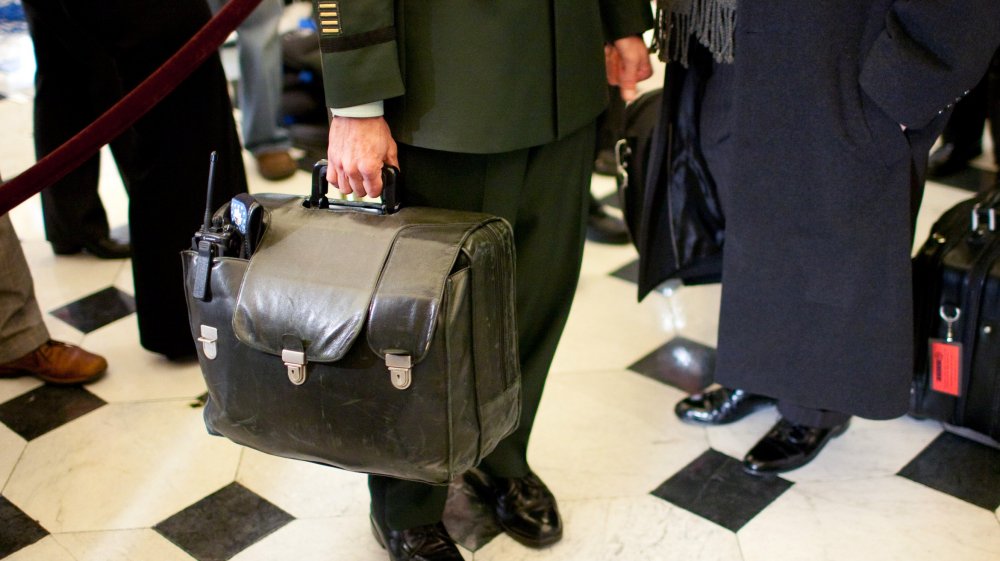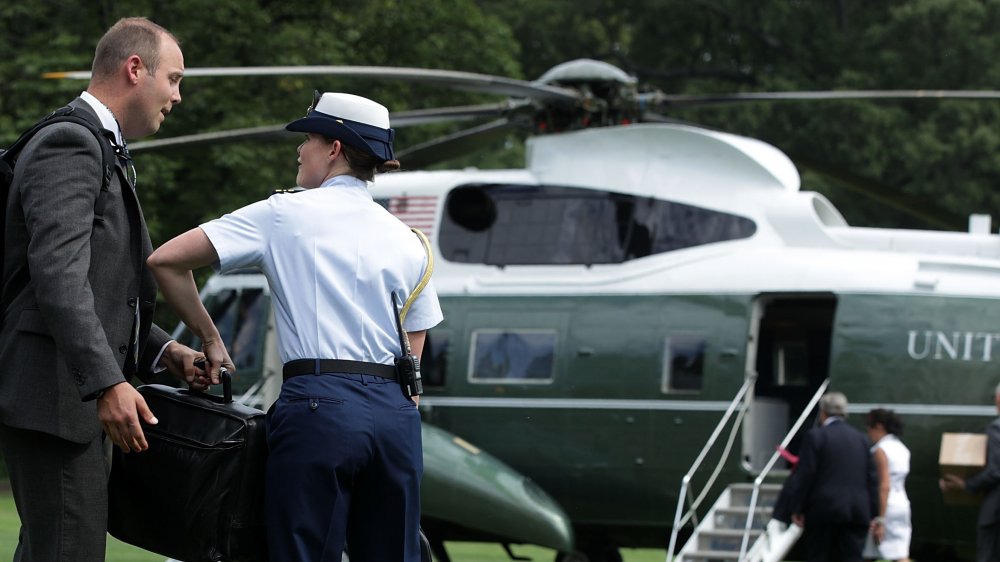The Untold Truth Of The Nuclear Football
It's officially known as the "president's emergency satchel," but realistically, that name makes it sound like it has an extra set of Oshkosh overalls and a pack of wet wipes. Maybe that's why it's more widely recognized by its bro-down-heavy, guitar-riff-worthy nickname: the nuclear football.
Since the Kennedy administration, this iconic black briefcase has followed the President of the United States like an ominous shadow with the capacity to end all of human civilization. At around forty five pounds, it would probably be more pragmatic to redesign the thing as a nuclear backpack or a nuclear rolly suitcase, but that wouldn't be in keeping with the whole Cold War aesthetic.
The history of this charming accoutrement is veiled in mystery. According to Smithsonian, it was first spotted in a photo from May of 1963, taken at the Kennedy family compound in Massachusetts. It's likely that JFK was the commander in chief who initiated the now-cemented tradition of having the football close to to the president at all times, since he was the one who asked "What would I say to the Joint War Room to launch an immediate nuclear strike? How would the person who received my instructions verify them?" It was a pertinent question.
And it keeps getting fumbled
Unfortunately for any hypothetical president with stubby little fingers and a short attention span, the president's emergency satchel doesn't come standard with a big red button or a real-world Battleship board game grid. What does it contain?
That's a great question. Obviously, for security reasons, the nuclear football's guts are a closely held secret. We know that they contain the codes and documentation necessary for the president to verify his identity when communicating with the Pentagon, should the United States ever find itself at the business end of an alien mothership or Godzilla whose atomic annihilation just can't wait until POTUS gets home. The details are fuzzy, but we know about one aspect for certain: "The Biscuit."
The Biscuit is a laminated card containing a portion of the President's authorization codes, and we can be certain of its existence because our fearless leaders keep losing track of it. According to The Hill, President Clinton misplaced the card for "several months" in 2000, Jimmy Carter accidentally sent it out with his dry cleaning, and after Ronald Reagan was shot, the Biscuit was discovered in the Gipper's discarded shoe at George Washington University hospital.

